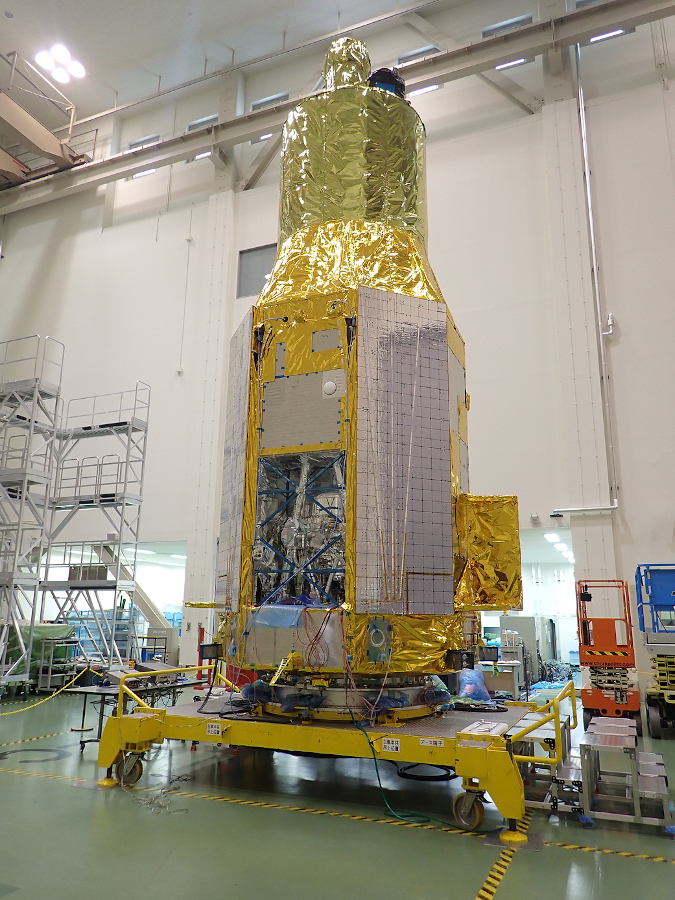
 Credit: JAXA/NEC
Credit: JAXA/NEC
The Launch of XRISM
Astronomers now have a new tool in space to help perfect our view of the high energy dynamics and composition of the Universe, thanks to the successful launch of the X-Ray Imaging and Spectroscopy Mission, or XRISM. XRISM, a collaboration between JAXA, NASA and ESA, was launched from the Tanegashima Space Center at 8:42 a.m on September 7, 2023 JST (7:42 p.m on September 6, 2023 EDT) on a JAXA HII-A rocket. The prime instrument on XRISM is a detector called Resolve. Resolve is a microcalorimeter, an instrument which determines the energy of an individual X-ray photon using a revolutionary new technology to precisely measure the extremely slight rise in temperature which occurs when an X-ray photon deposits its energy in one of Resolve's detectors. Resolve is so sensitive to these slight temperature changes that it can determine the energy of each X-ray photon to very high precision. To do this, Resolve uses special superconducting detectors which need to be held near absolute zero, and so the Resolve detectors are surrounded by a tank of liquid helium. Resolve gives scientists the most detailed view of the X-rays emitted by high-energy astrophysical objects, which provides highly accurate measurements of the motions and compositions of extremely hot gas produced by extreme objects like black holes, neutron stars, and stellar eruptions and explosions. XRISM also includes a soft X-ray imager called Xtend that expands the observatory's field of view to give XRISM one of the largest viewing areas of any X-ray imaging observatory ever flown. Xtend provides X-ray images and energy distributions over the entire Xtend field of view. The image above shows the XRISM observatory at the Tsukuba Space Center undergoing final pre-launch testing this past May. The tank holding XRISM's Resolve X-ray Spectrometer can be seen through the open door. Since launch, XRISM has successfully completed scheduled startup activities and will begin an in-orbit checkout period lasting about 3 months prior to the start of science observations.
Published: September 11, 2023
<
HEA Dictionary ● Archive
● Search HEAPOW
● Other Languages
● HEAPOW on Facebook
● Download all Images
● Education ● HEAD
>

Each week the HEASARC
brings you new, exciting and beautiful images from X-ray and Gamma ray
astronomy. Check back each week and be sure to check out the HEAPOW archive!
Page Author: Dr. Michael F. Corcoran
Last modified Tuesday, 27-Feb-2024 10:13:33 EST


